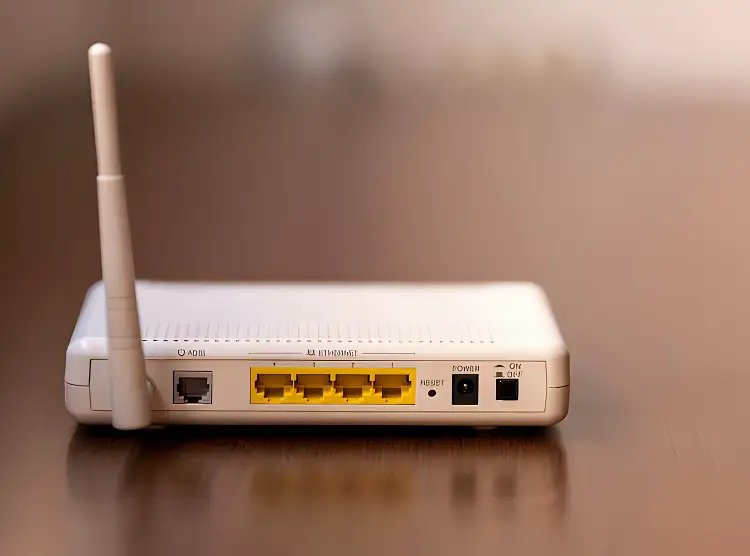In an increasingly connected world, WiFi has become an integral part of our daily lives, providing us with seamless internet connectivity.
Sometimes you may want to block wifi signals in a room or limit WiFi signals in a particular room.
Whether it’s for privacy, security, or to reduce electromagnetic exposure, knowing how to effectively block WiFi signals can be useful.
Here is a comprehensive guide on how to block WiFi signals in a room.
- Use WiFi Signal Blockers
- Employ Metal Foil or Mesh
- Strategically Position Furniture and Objects
- Utilize WiFi Signal Jamming Devices
- Configure Router Settings
Wifi: Overview
WiFi, short for Wireless Fidelity, refers to a set of wireless communication standards used for local area networking.
It allows electronic devices, such as computers, smartphones, tablets, and various other devices, to connect and communicate with each other and access the internet without the need for physical cables.
The basic principle of WiFi involves transmitting and receiving data through radio waves.
A WiFi-enabled device, like a smartphone or laptop, connects to a wireless access point (typically a router) using a specific frequency.
The access point, which is usually connected to the internet via a wired connection, broadcasts signals that devices can detect and connect to.
This connection allows for data transfer, internet access, and communication between devices on the same network.
What are WIFI Signals?
WiFi signals, also known as wireless signals, refer to radiofrequency signals that transmit data wirelessly over the air.
WiFi signals are used in wireless communication to transfer data between electronic devices, such as computers, smartphones, tablets, and other WiFi-enabled devices.
These signals allow devices to connect to a wireless access point (like a WiFi router) and communicate with each other within a certain range, typically within a home, office, or public space.
Materials That Can Block WIFI Signals

Several materials can interfere with WiFi signals, either by blocking or attenuating them.
Understanding these materials can be useful for optimizing WiFi signal strength and avoiding areas with excessive interference.
Here are some common materials that can interfere with WiFi signals:
Metal
Metal surfaces and objects, like steel, aluminum, and copper, can reflect and absorb WiFi signals.
Walls or structures made of metal can significantly attenuate WiFi signals, resulting in weaker connectivity within or around those areas.
Concrete
Concrete walls, floors, and ceilings can attenuate WiFi signals due to their dense composition.
WiFi signals struggle to penetrate concrete effectively, leading to reduced signal strength in areas where concrete structures are prevalent.
Brick and Stone
Similar to concrete, materials like brick and stone can also attenuate WiFi signals.
The density and composition of these materials obstruct the signal’s path, diminishing the WiFi range and signal strength.
Water
Water is an effective absorber of radiofrequency signals, including WiFi.
Since the human body contains a significant amount of water, people can act as obstacles that absorb and weaken WiFi signals.
Glass
Glass, while transparent, can still attenuate WiFi signals to some extent. Windows and glass doors can slightly reduce the strength of WiFi signals as they pass through.
Insulation
Certain types of insulation materials used in walls and ceilings, such as foil-backed insulation, can act as a barrier to WiFi signals, blocking or reducing their strength.
Wire Mesh
Fine wire mesh, like the kind used in some window screens or meshed metal sheets, can block or weaken WiFi signals. The mesh interrupts the signal’s path, causing attenuation.
Mirrors
Mirrors with metallic backing can reflect WiFi signals, potentially causing signal loss or interference in the direction of the mirror.
Mirrors consist of a thin layer of metal on a glass surface. This metal backing can cause electromagnetic interference, which can affect your WiFi signal.
However, the extent of interference depends on the size of the mirror.
For instance, a wall made entirely of mirrors may cause more interference than a small decorative mirror.
Electrical Appliances
Household appliances that emit electromagnetic interference, such as microwaves, cordless phones, and Bluetooth devices, can interfere with WiFi signals, particularly when near the WiFi router or WiFi-enabled devices.
Ceramic Tile
Another commonly used material for walls and floors is ceramic tiles.
However, it is important to note that, like drywall, ceramic tiles can weaken the WiFi signal as it travels through them.
Usually, mastic is used to install ceramic tiles on plaster or drywall. However, combining these materials can increase the amount of WiFi interference.
Plaster
Plaster walls, especially those containing metal mesh for reinforcement, can interfere with WiFi signals due to their composition and density.
Drywall
Drywall is a widely used construction material in both residential and commercial buildings.
It is known for its low impact on wireless signals, making it a preferred choice for interior walls and ceilings.
While drywall may not severely affect the signal, it can still cause a slight weakening of the signal as it passes through the walls.
Devices Operating on the 2.4 GHz Frequency
Wireless routers transmit and receive data wirelessly from your devices using radio waves.
These radio waves operate on three different frequency bands: 2.4 GHz, 5 GHz, and 6 GHz (on select devices).
However, the 2.4 GHz frequency band is very crowded, which results in a lot of noise.
Many devices such as baby monitors, cordless phones, wireless headsets, walkie-talkies, microwaves, garage door openers, and Bluetooth devices use the same band, which can decrease the strength of the WiFi signal.
To minimize signal interference and improve WiFi speeds, there are specific WiFi standards in place that structure how WiFi devices communicate with each other.
However, many devices that use the 2.4GHz band don’t need an internet connection, so they don’t follow these standards. This can also contribute to a decrease in WiFi signal strength.
Neighbor’s WiFi Network
If you check your wireless network settings, you may see your neighbors’ WiFi networks.
If any WiFi network is close to yours, it can cause interference and disrupt your broadband connection.
WiFi uses different frequencies and channels to send and receive data.
If your neighbor’s WiFi is using the same channel or an overlapping channel with yours, your internet speed may be affected.
Most routers allow you to switch to a different channel to reduce interference, and dual-band routers let you switch between the 2.4 GHz and 5GHz frequencies to reduce network interference.
How To Block Wifi Signals In A Room

There are lots of ways to block wifi signals in a room and you can go about it using the following methods:
1. Use WiFi Signal Blockers
WiFi signal blockers are devices specifically engineered to interfere with and block wireless signals.
Employing a Faraday cage, a prevalent signal-blocking tool, involves creating an enclosure made of conductive materials, like metal, which effectively blocks electromagnetic waves.
These waves are redirected around the exterior, preventing them from permeating the enclosed space.
Faraday cages are particularly useful for completely isolating a room from WiFi signals, ensuring complete privacy or security.
2. Employ Metal Foil or Mesh
An accessible and cost-effective approach to blocking WiFi signals involves using metal foil or mesh.
Aluminum foil, for instance, can be affixed to walls, windows, or doors to create a barrier that either reflects or absorbs WiFi signals.
The foil’s application on a significant surface area ensures its efficacy in preventing signal penetration.
This method operates on the principle of electromagnetic wave reflection, hindering the passage of signals into the covered area.
3. Strategically Position Furniture and Objects
The strategic arrangement of furniture and objects within a room can significantly influence WiFi signal strength.
Materials with higher density, such as wood, concrete, or thick walls, act as natural attenuators, weakening WiFi signals.
By placing large furniture items, bookshelves, or cabinets against the walls through which the WiFi signal enters, you can block or reduce signal strength within the room.
This tactic is efficient and doesn’t require any additional investments.
4. Utilize WiFi Signal Jamming Devices
WiFi signal jammers are specialized tools designed to momentarily disrupt and block wireless communications.
They operate by emitting interference signals on the same frequency as WiFi, overpowering legitimate signals and rendering them ineffective.
However, it’s essential to note that using signal jammers may be subject to legal restrictions in certain jurisdictions due to potential misuse.
Thus, thorough research and compliance with local laws are imperative before using such devices.
5. Configure Router Settings
Within the confines of your own WiFi network, you have the option to tailor router settings to limit the signal range.
Adjusting the power output of the router or altering the orientation of the antennas can restrict the signal to a specific area, effectively reducing its reach.
This customization is accessible through the router’s administrative interface, allowing you to fine-tune the WiFi coverage within your home according to your preferences.
Read Also: 10 Creative Ways to Stop Your Couch From Sliding
How To Block Wifi Signals In A Room: Conclusion
Blocking WiFi signals within a room can be a necessity for various reasons, such as maintaining privacy, enhancing security, or minimizing electromagnetic exposure.
The methods outlined in this guide offer a spectrum of options, from using specialized WiFi signal blockers to implementing straightforward techniques like metal foil or mesh.
Each method possesses its own set of advantages and considerations, enabling you to select the one that aligns with your particular needs and circumstances.
Always adhere to legal regulations when using WiFi blocking methods and carefully weigh the pros and cons to make an informed decision regarding their implementation in your environment.
By doing so, you can assert greater control over your WiFi usage and tailor its accessibility according to your preferences.


